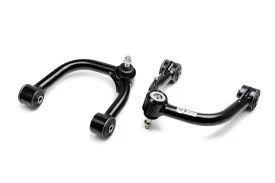
-
 Afrikaans
Afrikaans -
 Albanian
Albanian -
 Amharic
Amharic -
 Arabic
Arabic -
 Armenian
Armenian -
 Azerbaijani
Azerbaijani -
 Basque
Basque -
 Belarusian
Belarusian -
 Bengali
Bengali -
 Bosnian
Bosnian -
 Bulgarian
Bulgarian -
 Catalan
Catalan -
 Cebuano
Cebuano -
 Corsican
Corsican -
 Croatian
Croatian -
 Czech
Czech -
 Danish
Danish -
 Dutch
Dutch -
 English
English -
 Esperanto
Esperanto -
 Estonian
Estonian -
 Finnish
Finnish -
 French
French -
 Frisian
Frisian -
 Galician
Galician -
 Georgian
Georgian -
 German
German -
 Greek
Greek -
 Gujarati
Gujarati -
 Haitian Creole
Haitian Creole -
 hausa
hausa -
 hawaiian
hawaiian -
 Hebrew
Hebrew -
 Hindi
Hindi -
 Miao
Miao -
 Hungarian
Hungarian -
 Icelandic
Icelandic -
 igbo
igbo -
 Indonesian
Indonesian -
 irish
irish -
 Italian
Italian -
 Japanese
Japanese -
 Javanese
Javanese -
 Kannada
Kannada -
 kazakh
kazakh -
 Khmer
Khmer -
 Rwandese
Rwandese -
 Korean
Korean -
 Kurdish
Kurdish -
 Kyrgyz
Kyrgyz -
 Lao
Lao -
 Latin
Latin -
 Latvian
Latvian -
 Lithuanian
Lithuanian -
 Luxembourgish
Luxembourgish -
 Macedonian
Macedonian -
 Malgashi
Malgashi -
 Malay
Malay -
 Malayalam
Malayalam -
 Maltese
Maltese -
 Maori
Maori -
 Marathi
Marathi -
 Mongolian
Mongolian -
 Myanmar
Myanmar -
 Nepali
Nepali -
 Norwegian
Norwegian -
 Norwegian
Norwegian -
 Occitan
Occitan -
 Pashto
Pashto -
 Persian
Persian -
 Polish
Polish -
 Portuguese
Portuguese -
 Punjabi
Punjabi -
 Romanian
Romanian -
 Russian
Russian -
 Samoan
Samoan -
 Scottish Gaelic
Scottish Gaelic -
 Serbian
Serbian -
 Sesotho
Sesotho -
 Shona
Shona -
 Sindhi
Sindhi -
 Sinhala
Sinhala -
 Slovak
Slovak -
 Slovenian
Slovenian -
 Somali
Somali -
 Spanish
Spanish -
 Sundanese
Sundanese -
 Swahili
Swahili -
 Swedish
Swedish -
 Tagalog
Tagalog -
 Tajik
Tajik -
 Tamil
Tamil -
 Tatar
Tatar -
 Telugu
Telugu -
 Thai
Thai -
 Turkish
Turkish -
 Turkmen
Turkmen -
 Ukrainian
Ukrainian -
 Urdu
Urdu -
 Uighur
Uighur -
 Uzbek
Uzbek -
 Vietnamese
Vietnamese -
 Welsh
Welsh -
 Bantu
Bantu -
 Yiddish
Yiddish -
 Yoruba
Yoruba -
 Zulu
Zulu
broken upper control arm
Understanding the Importance of the Upper Control Arm and the Consequences of Damage
The upper control arm is a pivotal component in the suspension system of a vehicle, playing a crucial role in ensuring stability, handling, and overall ride quality. Typically, vehicles incorporate both upper and lower control arms to manage the orientation and movement of the wheels as they navigate various terrains. When considering automotive maintenance and repairs, understanding the implications of a broken upper control arm is vital for both safety and performance reasons.
The Role of the Upper Control Arm
To appreciate the impact of a broken upper control arm, one must first understand its function. The upper control arm connects the vehicle's chassis to the wheel assembly, allowing for controlled movement of the wheel while minimizing vibrations and shocks from the road. This component also enables the wheels to maintain proper alignment and camber, which are critical for optimum tire wear and handling.
Signs of a Damaged Upper Control Arm
Recognizing the early signs of a broken upper control arm can prevent further damage and costly repairs. Symptoms may include unusual tire wear, such as excessive edge wear or uneven patterns, which can indicate misalignment. Additionally, drivers may experience a wandering steering wheel or difficulty in maintaining a straight line while driving. Clunking or knocking noises when going over bumps can also signal that the upper control arm or its bushings are compromised.
Consequences of Driving with a Broken Upper Control Arm
broken upper control arm

Driving with a broken upper control arm poses several serious risks. First and foremost, it compromises vehicle safety. If the upper control arm fails entirely, the wheel can become detached, leading to a loss of control and potentially causing accidents. Furthermore, the uneven distribution of forces can lead to additional damage to other components of the suspension system, including struts and axles, resulting in a snowball effect of repairs and increased repair costs.
Repair or Replacement
When dealing with a damaged upper control arm, vehicle owners must consider whether to repair or replace the component. Generally, replacing a broken control arm is the most reliable solution. While repairs might seem cost-effective initially, they may not offer long-term reliability and safety. Replacement parts are often designed to be more resilient and incorporate improved technology that can enhance performance.
The Importance of Professional Inspection
Conducting regular inspections of the suspension system is paramount. Mechanics can identify subtle signs of wear and tear that may not be obvious to the average driver. If you suspect any issues related to the upper control arm, promptly visiting a certified mechanic can save time and money in the long run. Mechanics will typically inspect the entire suspension system, ensuring that all components, including bushings and ball joints connected to the upper control arm, are in good condition.
Conclusion
In summary, the upper control arm is integral to the functionality and safety of a vehicle’s suspension system. A broken upper control arm can lead to a cascade of issues, affecting not just performance but also the safety of the driver and passengers. Understanding the signs of damage and recognizing the importance of timely repairs and replacements can mitigate risks associated with suspension failure. Vehicle owners should prioritize regular maintenance and professional inspections to ensure their suspension remains in peak condition. Knowledge about such critical components helps foster a deeper appreciation for vehicle mechanics and safety. Taking action as soon as potential issues arise can facilitate smoother rides and prevent dangerous situations on the road.







